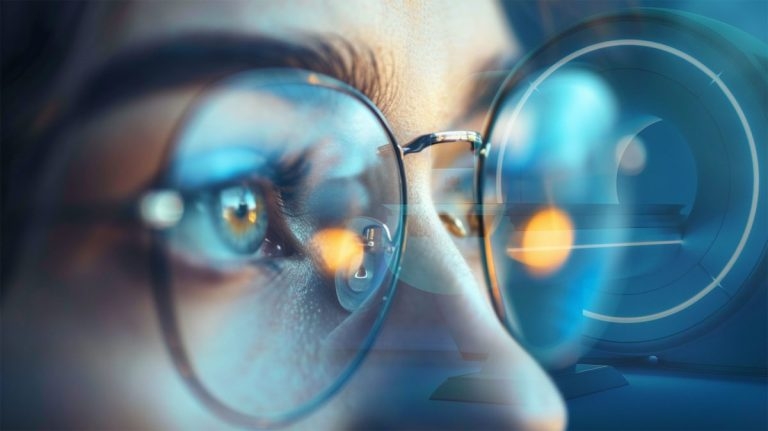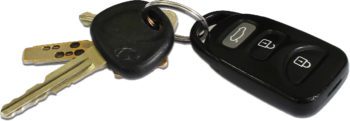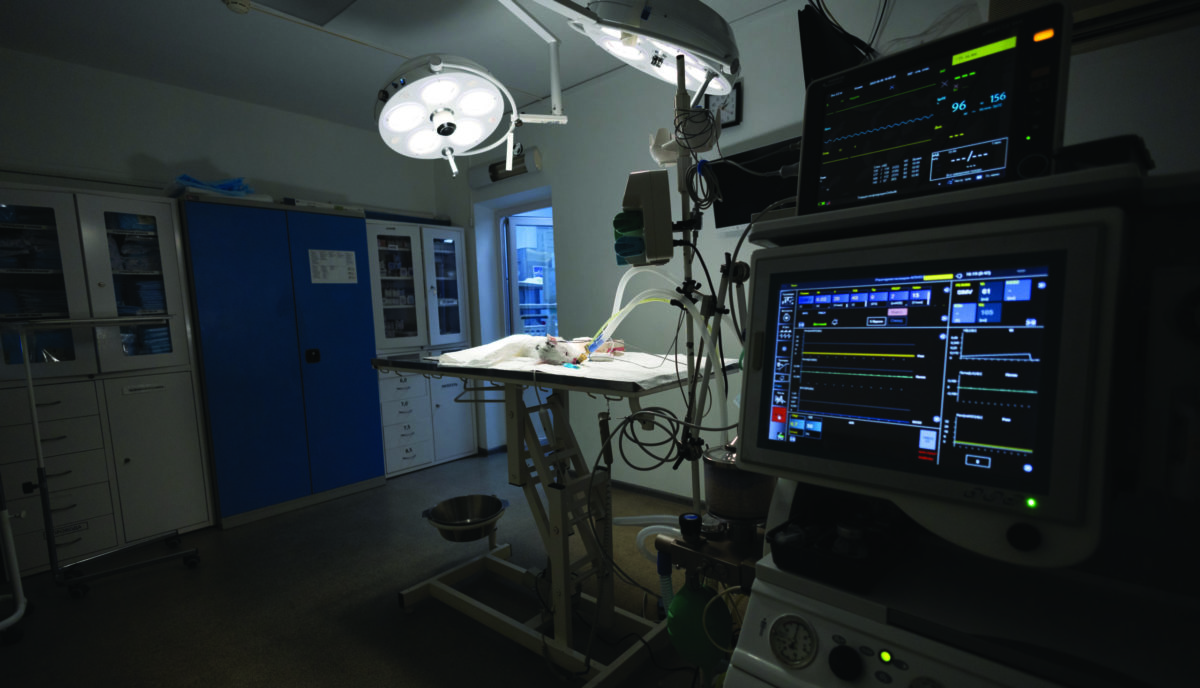1 Jun 2024
Kitting out a clinic can be fraught with difficulties. Too much choice is one problem, while financing is another. However, common sense can be drawn on in acquiring what is needed at the lowest possible cost, being tax efficient and considering used equipment…

Images © iStock.com / Margo_Alexa and iStock.com / Aliaksandr Marko
Veterinary practices need equipment – and lots of it, too. From office supplies and chairs for the waiting room, through to examination tables and specialised operating tech, scanners and lighting, such items are not cheap.
While a variety of ways of financing acquisitions exist – often the first and main consideration of any practice owner – it also helps to consider how HMRC can make the expense less painful and whether equipment actually needs to be new.
Looking at the first of these elements, tax relief, Helen Thornley, a technical officer at the Association of Taxation Technicians, outlined that most day-to-day practice costs – heat, light, insurance, wages and consumables – are treated as revenue expenses. She said this means they “can usually be offset against business income as they arise”.
However, Ms Thornley noted that in contrast, “equipment, which will be used in the practice for a number of years, is usually treated as a capital expense” – and this makes a difference for tax treatment.
Thankfully, as Ms Thornley detailed, irrespective of the route to acquisition, tax relief should be available, but that “it is just a matter of the timing when the relief is given”.
As an overview, she said that “where assets are purchased outright – either new or second hand – this is considered a capital cost, and relief is given through a system of capital allowances”.
The same applies if the asset is acquired through hire purchase; the practice will claim capital allowances on the cost in the year of acquisition and relief for interest costs as they arise.
But where assets are leased, Ms Thornley said that the practice will be considered to be renting the asset and so “generally capital allowances will not be available as the practice doesn’t own the asset”. She added: “The tax treatment is complex and depends on the type of lease and how long it is.”
In brief, an operating lease gives a practice relief for leasing costs as they are incurred. In opposition, with a finance lease, Ms Thornley said that a practice needs to include the cost of the asset (and lease liability) in their accounts with the cost written down – depreciated – over its useful life. The practice gets tax relief for the depreciation each year, plus the interest paid under the lease.
As for capital allowances mentioned earlier, Ms Thornley explained that the tax relief will depend on the nature of the assets.
She said: “Most purchases will fall into one of the following categories: main rate assets such as plant, machinery and office equipment; integral features – this includes lighting systems, cold water systems and heating/cooling systems – cars; and structures and buildings.
“Main rate assets and integral features qualify for the annual investment allowance (AIA). This allows businesses to claim tax relief on 100% of the cost in the accounting period in which it is incurred. However, it is capped at a maximum of £1 million per 12-month accounting period.”
As to its value, by way of example, if a practice – as a company – pays corporation tax at the main rate of 25%, it would be entitled to 25% corporation tax relief on the equipment.
Only the largest businesses are likely to exceed the AIA limit in any given year. That said, Ms Thornley warned that “smaller businesses may need to be careful of their AIA limits if they are connected to other businesses. A group of companies, for example, will only be entitled to one AIA between them”.
But if the AIA limit is breached, Ms Thornley said that the expenditure then goes into a “pool” and the practice can claim writing down allowances (WDAs) on the balance. This, she said, gives relief much more slowly – at 18% of the unrelieved cost each year for main rate assets and 6% on integral features.
An alternative to WDAs exists, according to Ms Thornley – companies can instead benefit from full expensing. On this, she explained that it also allows 100% relief for the cost up front, but has less favourable treatment when equipment is sold.
In time, equipment needs change. If an asset is scrapped and the practice gets no proceeds from it then HMRC will have no interest. But, as Ms Thornley detailed, this isn’t the case where an asset returns money on sale.
This is because AIA grants full relief on the cost in the year of acquisition. So when an asset is sold, some of the relief the practice has claimed needs to be recovered. The precise mechanism will vary depending on whether AIA or full expensing was claimed on acquisition.
Ms Thornley explained that with full expensing, a stand-alone balancing charge equal to the proceeds received always exists. But if the practice has claimed AIA, it is likely that sale proceeds will be effectively added back to the profit to be subject to tax.

Unlike vans, cars do not qualify for the AIA or full expensing. Relief is normally given through writing down allowances, based on the CO2 emissions of the car. The rate is 18% for cars emitting 50g CO2/km or less and 6% otherwise.
Allowances are further restricted if the practice is a partnership or sole trader, and the car is used by the partners or business owner. Here, Ms Thornley reminded that allowances need to be reduced to reflect any private use.
Fully electric cars have tax benefits and are eligible for 100% first-year allowances (FYAs). But practices need to act quickly. Ms Thornley pointed out that “these FYAs are time limited and expire on 31 March 2025 for companies and 6 April 2025 for unincorporated businesses.”
Structures and buildings that are used by a practice may be eligible for capital allowances – albeit slowly at 3% of the qualifying expenditure on non-residential structures and buildings each year.
As Ms Thornley added: “This means full relief for the cost can be obtained in just over 33 years.”
Moving on from tax treatment, Alex Willis – UK account manager, auctioneer and valuer at the Hilditch Group, which repurposes used equipment – thinks that second-hand can offer practices the financial benefit of “access to higher-quality equipment, which could potentially be out of reach if purchasing new”.
He acknowledged that a “convenience factor” would exist for practices replacing or upgrading with similar systems as it “avoids the need to retrain and familiarise staff with new equipment”. Allied to this are considerations over sustainability.
As to the importance of the second-hand medical equipment market, Mr Willis said Hilditch sells an average of 2,500 lots a month, has around 500 active buyers registered and last year’s London Vet Show “clearly demonstrated demand for second-hand equipment”.
When considering this increased demand for secondhand, he highlighted the contributing factors as including rising costs of equipment and increased circular economy awareness.
Plus, he said “most new suppliers are focusing on mobile imaging products, with few being able to offer the convenience of a full range of equipment, unlike the breadth of devices available within the second-hand market”.

In terms of the main routes to purchase, practices have the option of buying at auction or via a retail sale. On the former, Hilditch hosts both live and timed online auctions. Mr Willis made clear, though, that “if equipment is purchased at auction then a buyer’s commission of 22.5% plus VAT is added”.
A retail sale is a different beast, he said, as it “offers a convenient alternative to purchase at a fixed price plus VAT”. He considered this route “a lower-risk solution with the added reassurance that everything will have been checked by our in-house engineering team and a three-month warranty provided on the product.”
As for finance, Mr Willis said it is not necessarily an issue as Hilditch works with a finance house.
A natural concern will be buyer protection, but here Mr Willis said that “our vendor and buyers’ terms and conditions ensure there are no issues with the transfer of title”.
He also said that “virtually all our stock is sourced via the NHS, OEMs [original equipment manufacturers] or large finance providers, with all vendors undergoing strenuous verification checks to make sure products being sold come from a legitimate source”. Any faults or damage is reported in the lot details.
It should be said, Mr Willis continued, that “equipment bought via auction is sold as seen”. However, higher-value items include a condition report, and buyers can request a report to be issued on items of interest. Equipment can also be viewed in person before bidding.
Equipment can be delivered and installed for a charge, and post-purchase, the company offers ongoing service and repair.
It should be remembered that while practices purchase equipment, they can also sell. Here, Mr Willis suggests that they could “generate capital from their redundant equipment by selling”. His firm offers a fully supported resale solution, providing advice and no obligation asset valuations, on-site assessment of equipment and inventory reporting, plus collections can be arranged.
It needs to be said that other companies offer similar services; they can be found by searching online.